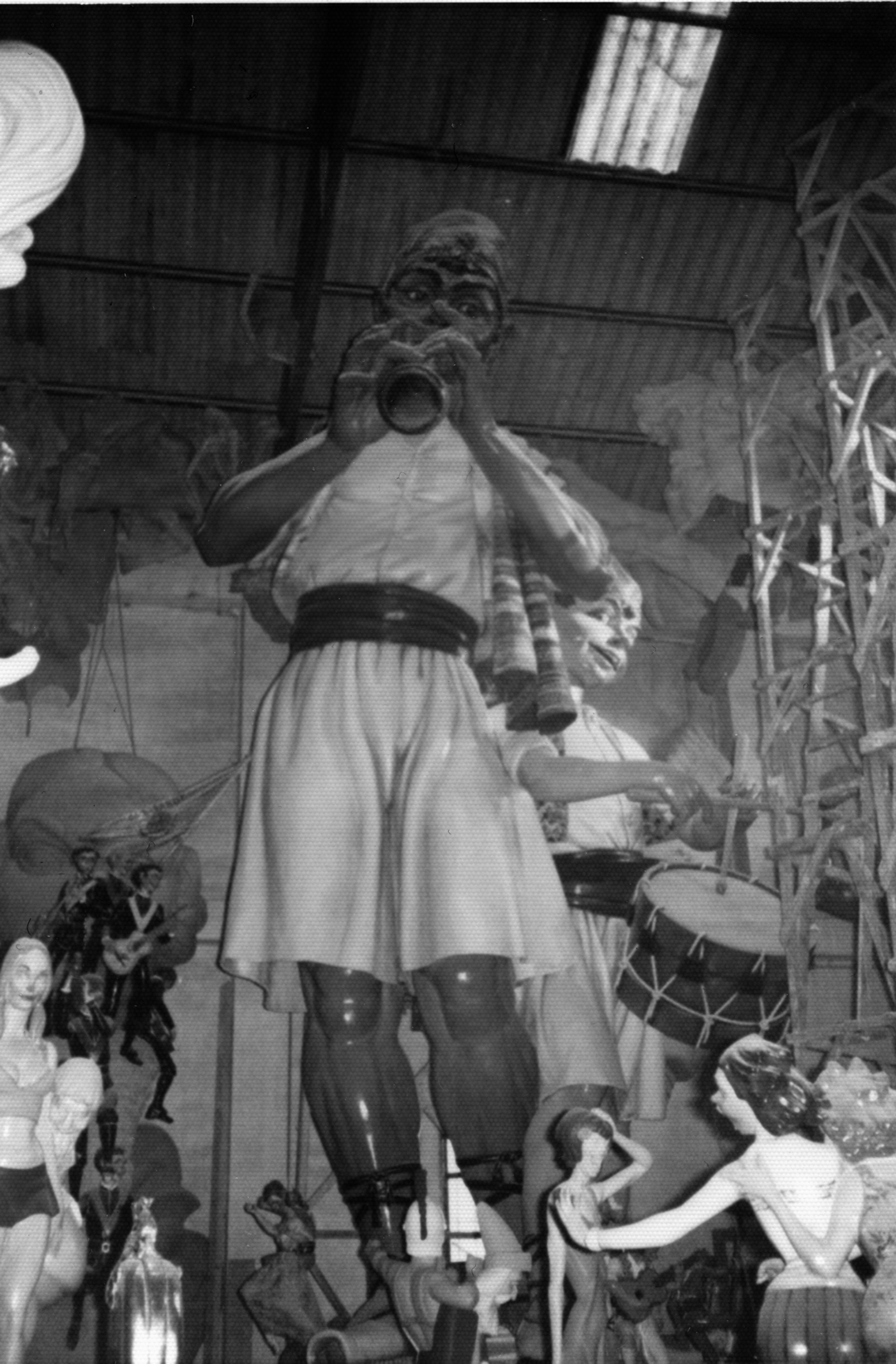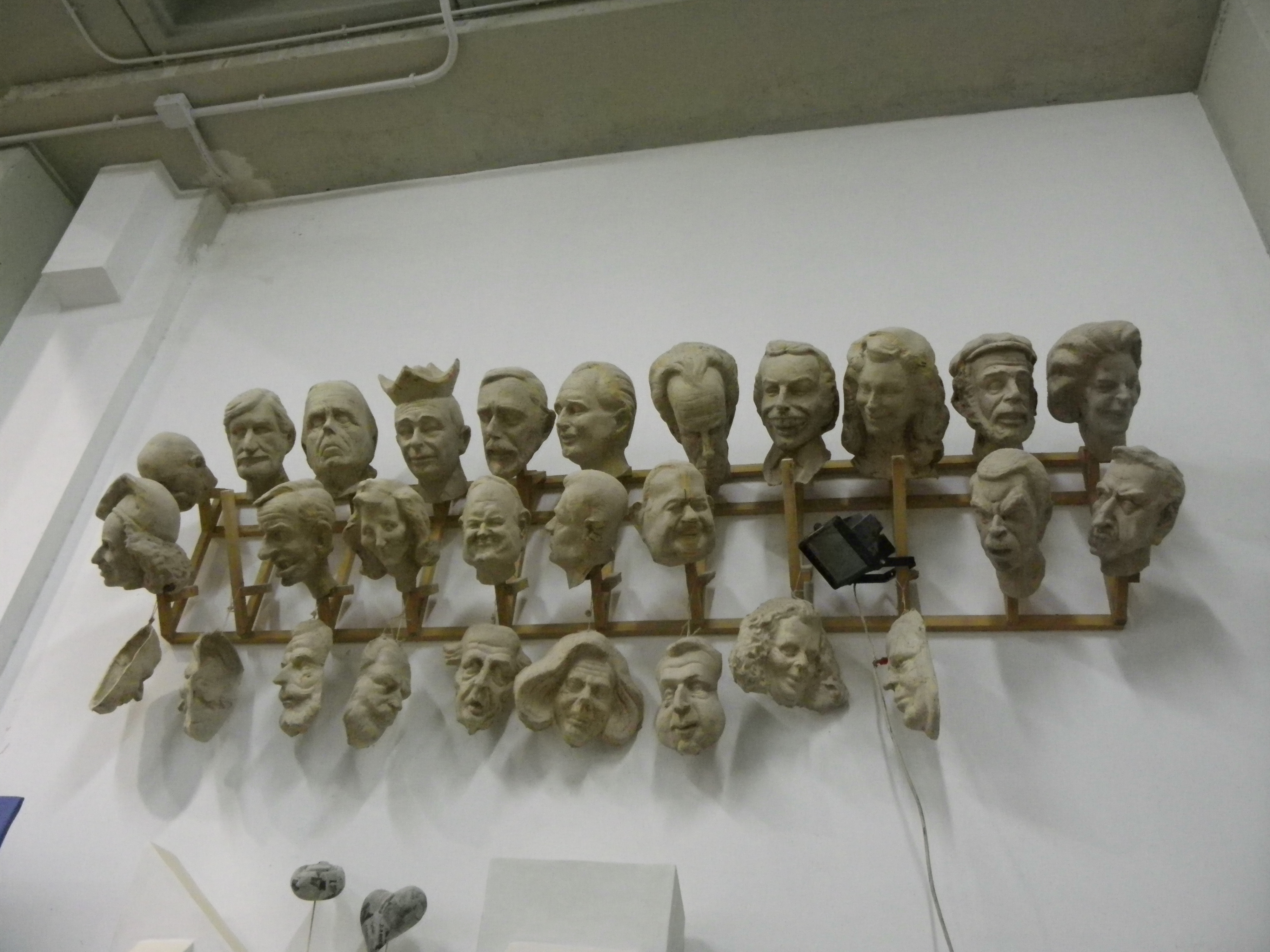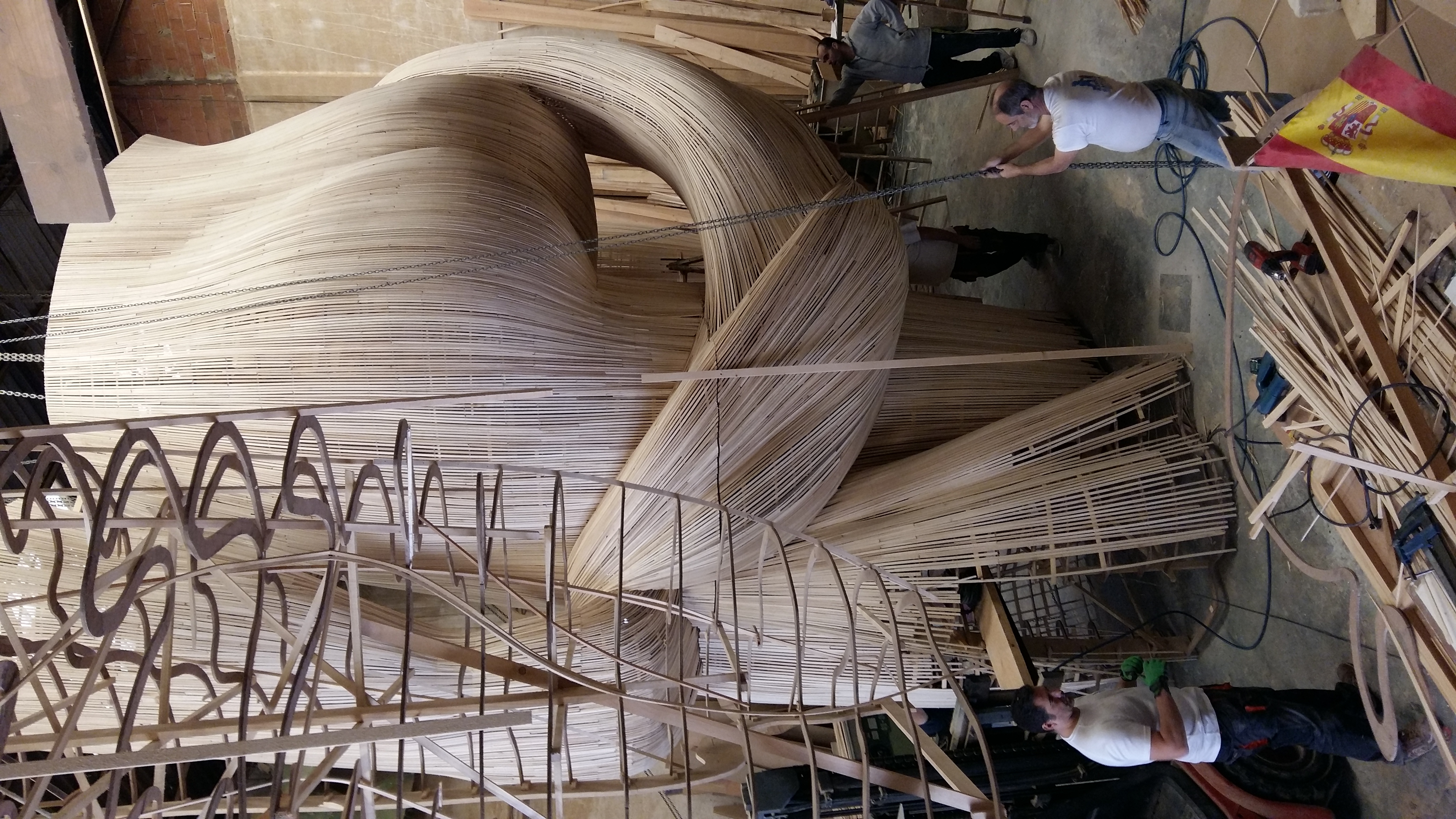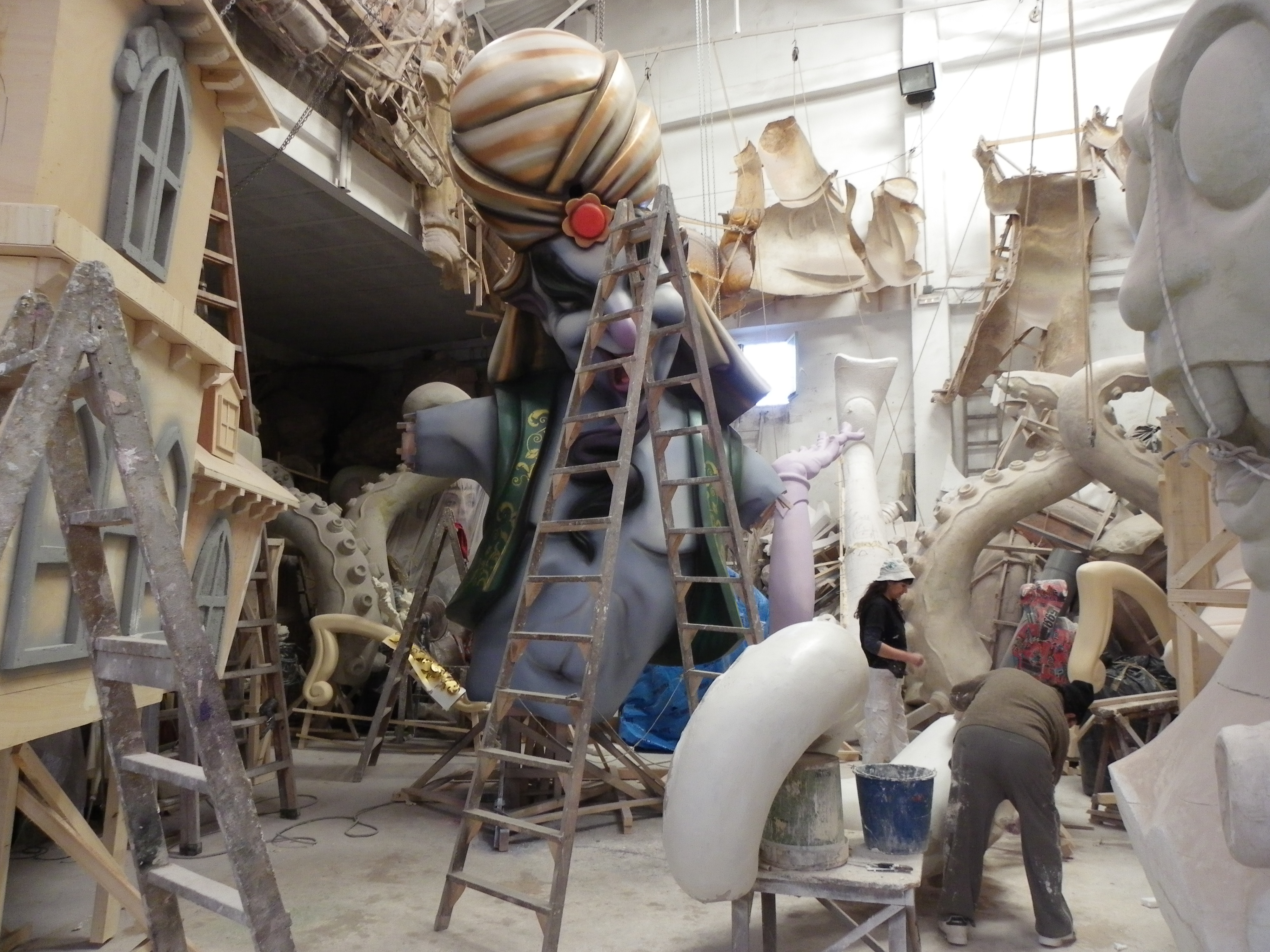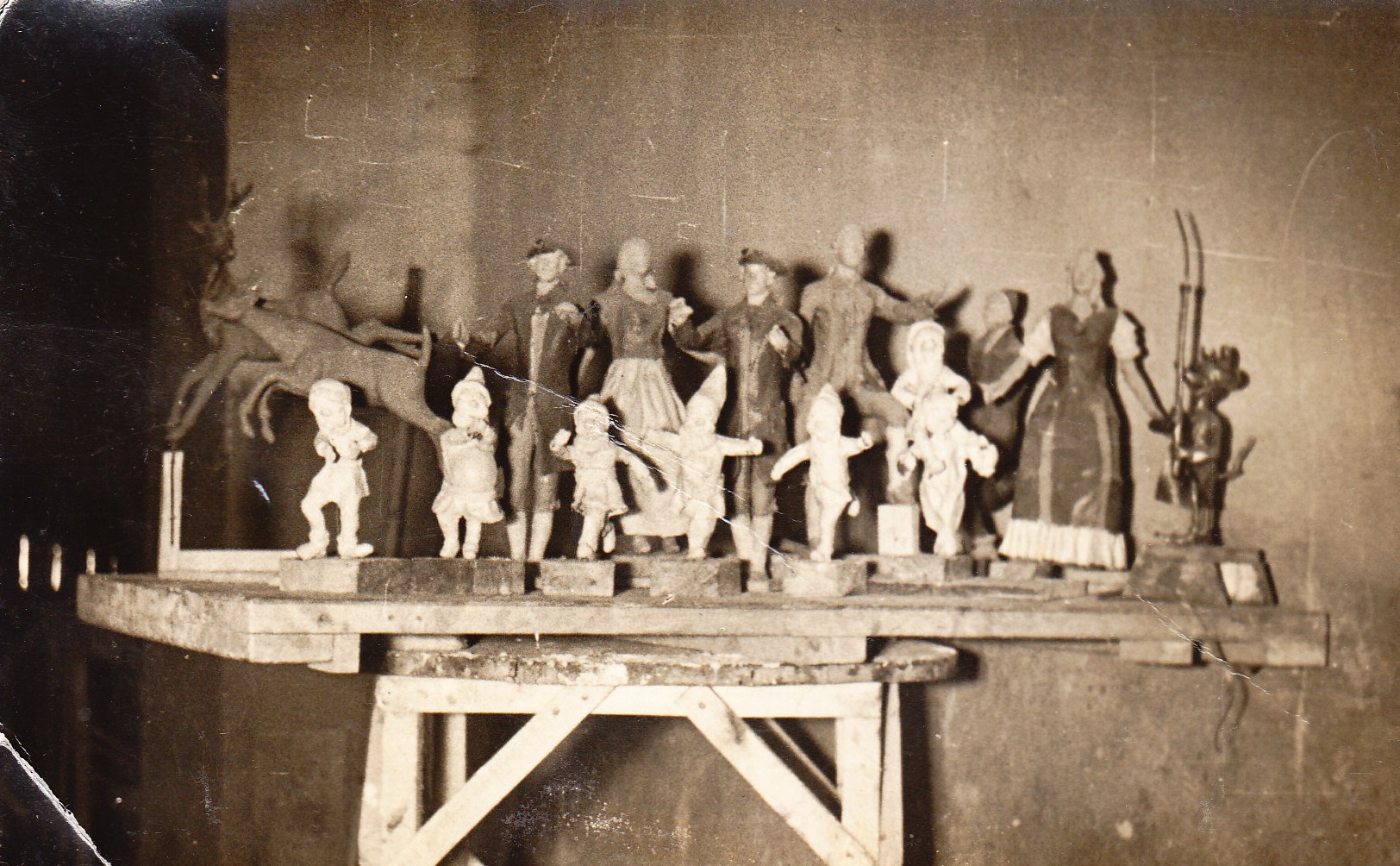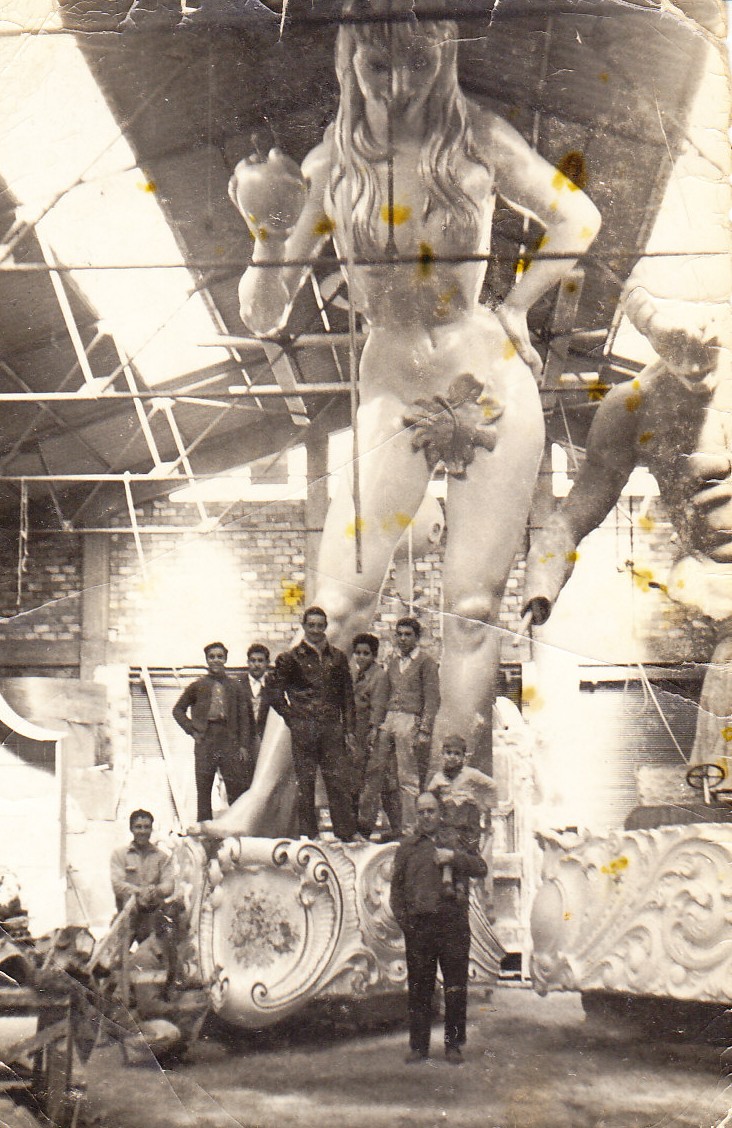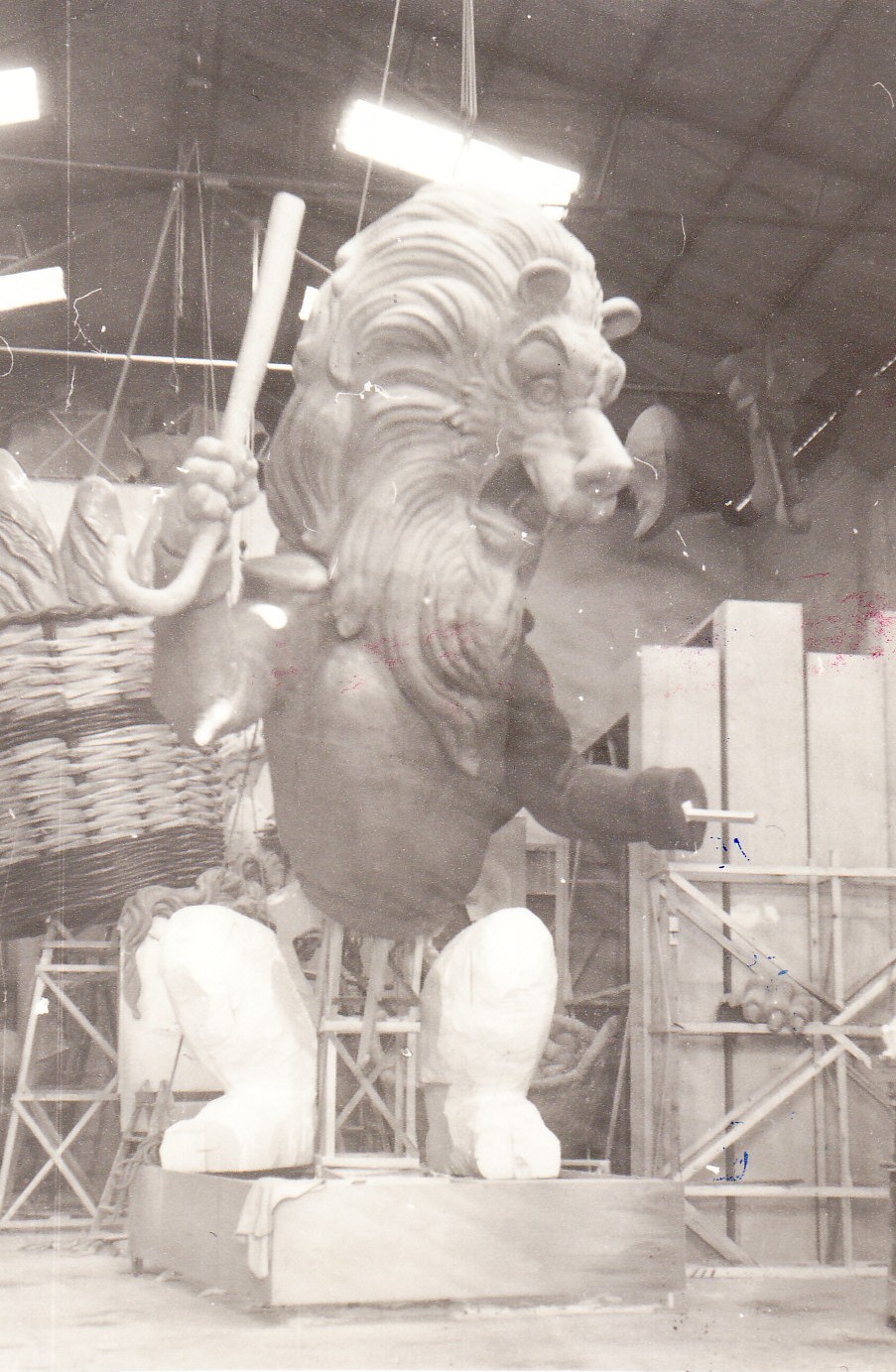WORKSPACES (II). THE WORKSHOP
The Ciutat de l’Artista Faller comprises a main nucleus of 50 workshops in a series of blocks between the streets called Ninot, Vicent Canet, Carles Cortina and Carmel Roda. In the 1970s another 8 workshops were set up along Fuego street, in the 80s twelve ground-floor bays were specially designed for the construction of children’s fallas along Carrer del Ninot.
The surface area of these workshops ranges from 400 square meters down to 200 square meters, with main façades about 15 metres in width. The architecture reflects the sober character of typical industrial bays from the development period of the 1950s-60s, leaving room for decoration only in the exposed brick lines marking the borders of façades and the ceramic pieces identifying the resident artists.
The roofs are gabled (with vertexes at 10 metres in height) and along some parts looking onto the streets, a few bays conserve walk-on sections where ninots were once dried in the sun. Inside the workshops, artists distributed their work area according to available space: office, washrooms, storage area, sections for painting, sanding, carpentry, etc. Some workshops still preserve at half-height a gallery area called the naia where old plaster and cardboard moulds are kept, corresponding to mythical figures and ninots that are still highly recognisable today.
Many generations of artists have established their workshops in the Ciutat de l’Artista Faller: Josep Barea Sánchez, Vicent Tortosa Biosca, Vicent Luna, Salvador Debón, Julián Puche, Josep Ballester, Joaquim Dolz, Josep Vidallach, the brothers Gimeno, Gaspar Jaén, Josep Pasqual (Pepet), Josep Martínez Mollà, Miguel Santaeulalia, Arturo Martínez Areal (El Patas), José Luis Pérez (El Nóvel), Mario Lleonart, Vicent Agulleiro, Manuel Viguer, etc. These men produced emblematic fallas that have gone down in history, as well as floats and carriages, scenarios, sets and theme areas for numerous sites in Valencia, other areas of Spain and abroad.
